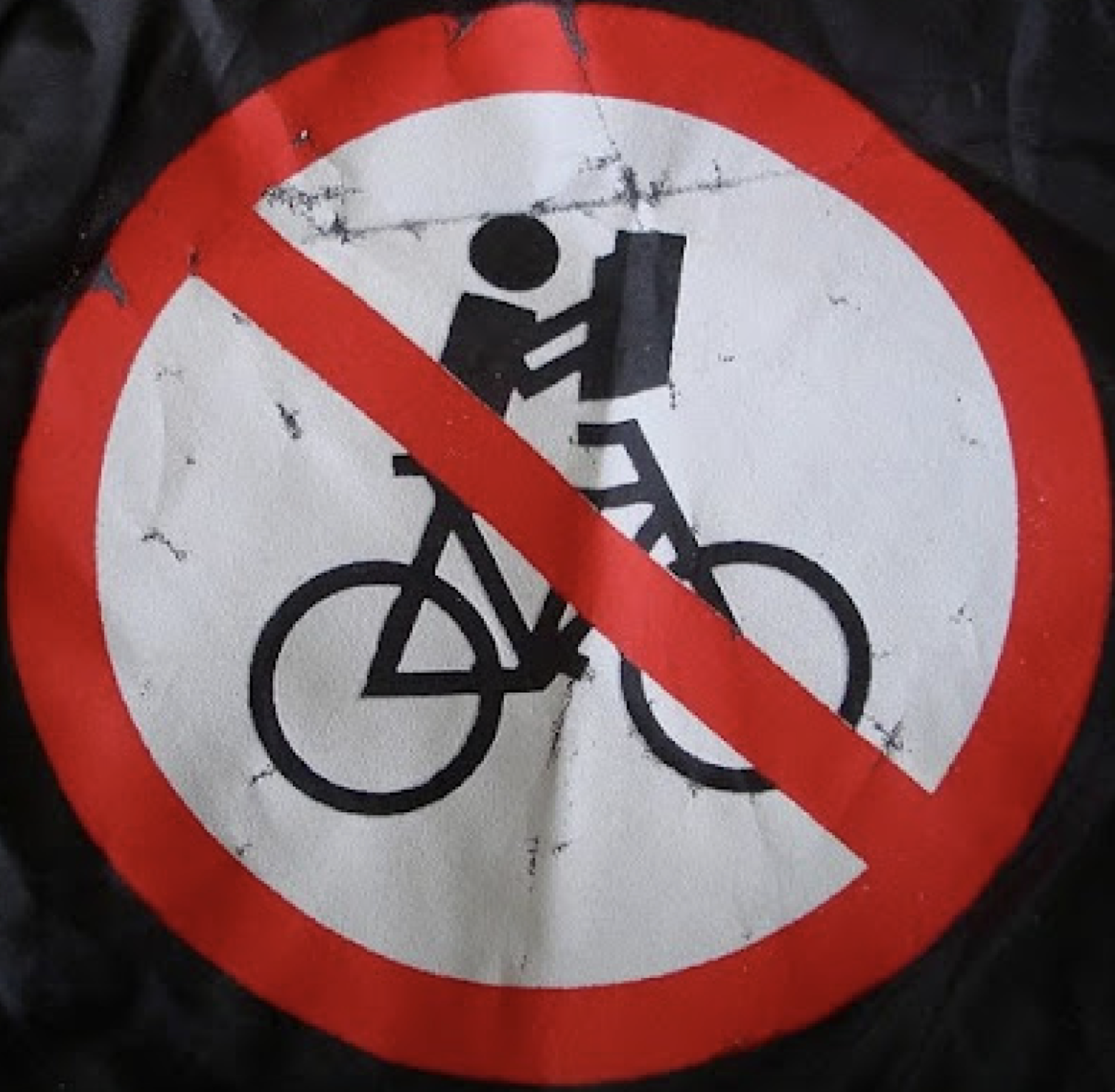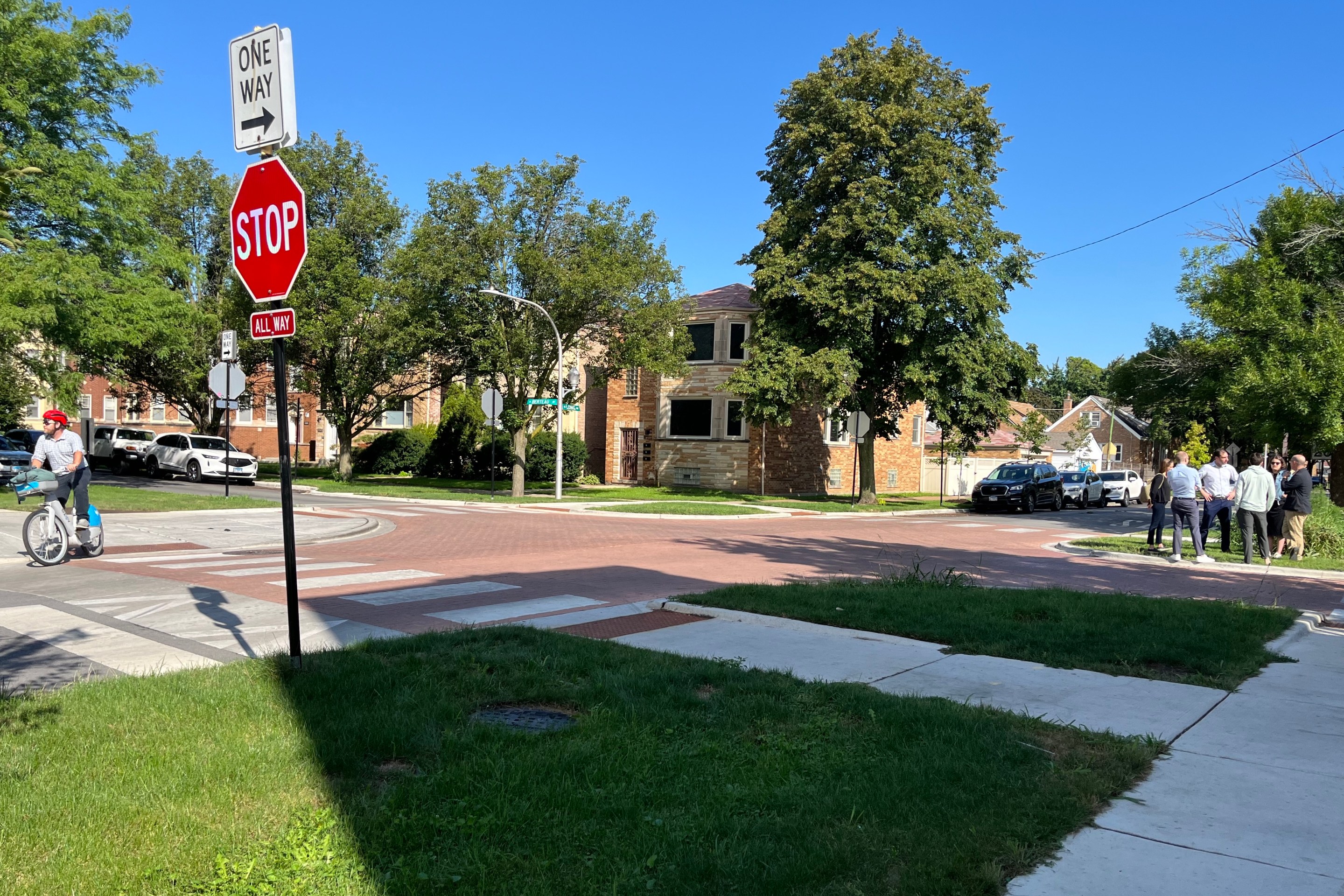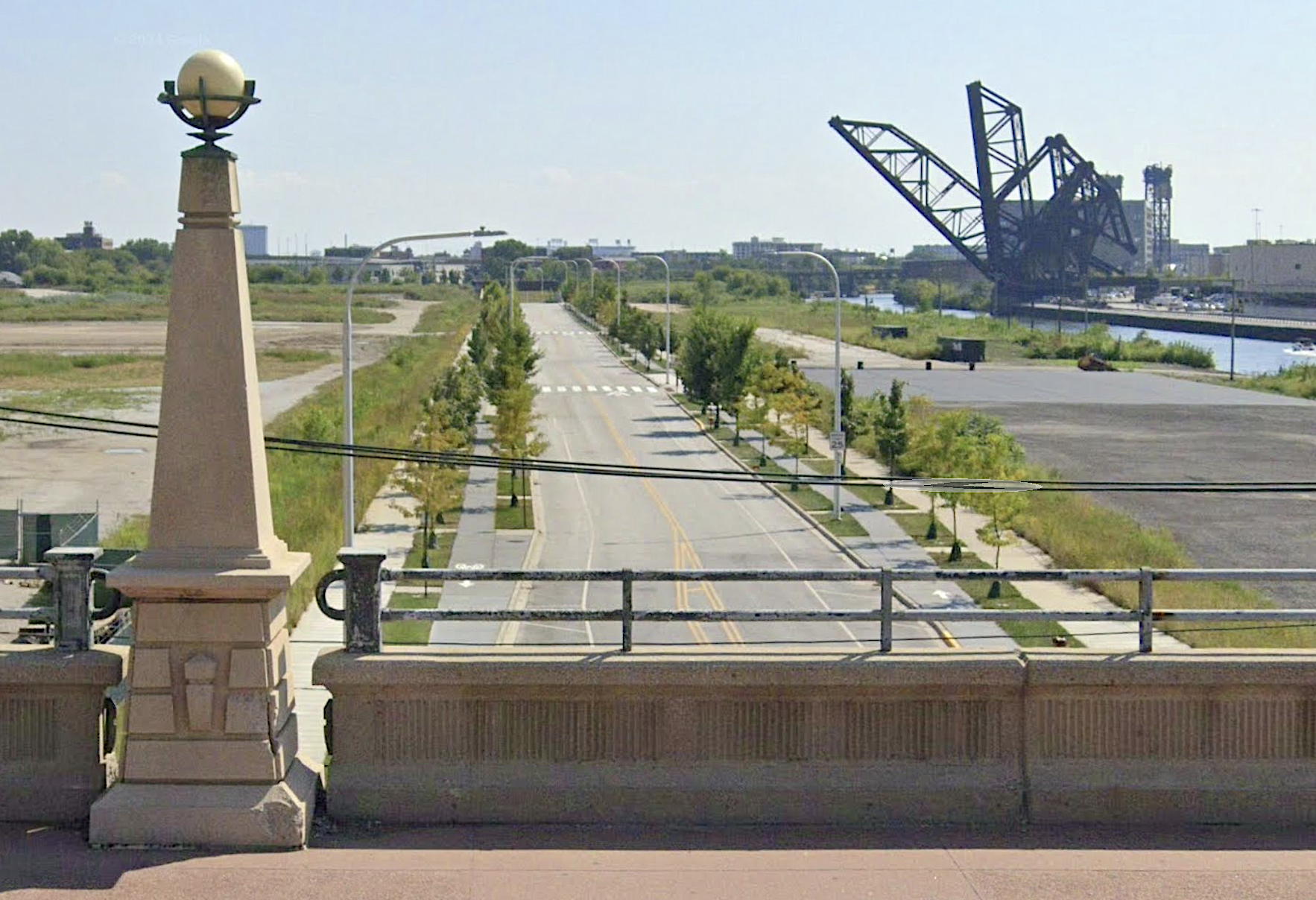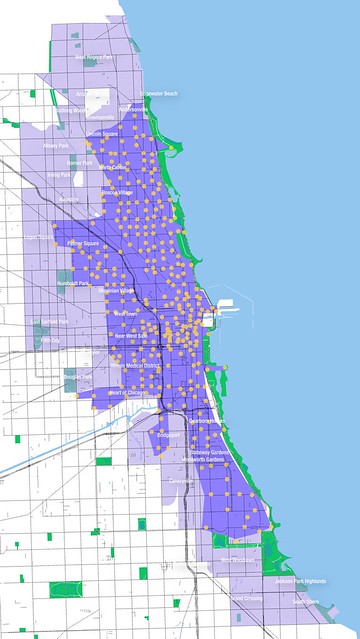
Last month, I won a digital silver medal in the Divvy Winter Olympics, a challenge put on by the bike-share service to encourage cold-weather ridership. I was one of 3,444 Divvy members who won medals during the promotion. Taking five or more trips between December 1 and February 16 got you a bronze medal, 25 or more trips earned you a bronze, and 50 or more garnered you a gold.
The untold Olympic story here is that I had an unfair advantage, and it’s not because I doped. There are roughly 15 Divvy stations within a half-mile of my house. It’s hard for me to walk more than a couple blocks without running across an available bike. A three-minute trip on Divvy is faster and more convenient than a ten-minute walk in the cold, so taking lots of trips was a no-brainer for me.
The planners at Divvy and the Chicago Department of Transportation are well aware of the importance of station placement. The system currently has 300 docking stations, and they’ve been working to site 175 additional stations, slated to come online this summer.
Of these new stations, about 20 percent will be “infill,” reducing the space between stations, and 80 percent will be “expansion,” increasing Divvy’s reach into new areas. As Steven Vance previously reported, total bike-share ridership, as well as rides per capita, increase as the distance between stations decreases. The areas targeted for expansion include parts of Albany Park, Avondale, Bronzeville, Canaryville, Douglas Park, Downtown, East Garfield Park, Edgewater, Humboldt Park, Hyde Park, Irving Park, Logan Square, Pilsen, Rogers Park, South Shore, Ukrainian Village, Washington Park, and Woodlawn.
“We are excited to be expanding and serving new areas of the city,” said Assistant CDOT Commissioner Sean Wiedel. He noted that the website for suggesting station locations has received 19,000 clicks and 2,400 comments, suggesting 2,247 locations, which shows Chicagoans are keenly interested in the system’s growth.
When siting a new Divvy station, the planners seek to incorporate this feedback while also taking a more technical approach that factors in ridership and maintenance considerations. For example, it would be inefficient for Divvy crews to maintain new stations installed far from existing ones. On the other hand, stations clustered too closely together wouldn’t do much to increase ridership. Keeping in mind other factors like land use, sun exposure -- necessary for recharging the solar-powered batteries -- as well as seemingly trivial details like the locations of manholes, the Divvy team wants to site stations that will function well and won’t have to be relocated in the future.
The hundreds of station installations since the system launched last summer included a few sites that were shifted after the initial implementation. After moving stations after locations were deemed unsafe after-the-fact, or in response to objections from property owners, this year the planners are trying to avoid the additional expense of relocations by making sure they get the placements right the first time.
Wiedel said the biggest challenge in placing stations last year was opposition from aldermen, merchants, and residents to replacing on-street car parking spaces with Divvy stations. As a result, over two-thirds of all existing stations were placed on sidewalks, with the remaining third located in parks or on the street. In the future, the planners will avoid replacing parking spots with stations whenever possible.
However, it’s important to keep in mind that the stations can generate more foot traffic on business strips than parking spots do. Last year John Greenfield observed a dozen customers using a Wicker Park docking station over a two-hour period, while two adjacent cars parking spaces had zero turnover.
Meanwhile, placing Divvy stations on sidewalks instead of the street can create cramped conditions for pedestrians and cyclists. For example, at the northwest corner of Ashland and Division, a station on the sidewalk on the north side of Division creates a bottleneck for people walking to and from the Blue Line. This station should have been placed in the street, where there’s plenty of space for it.
Even when docking stations are installed in the street, careless placement can create obstacles for pedestrians. Another Wicker Park station, located at Wood and Beach, blocks an unmarked crosswalk. Surely the station could be relocated to keep the pedestrian crossing clear.
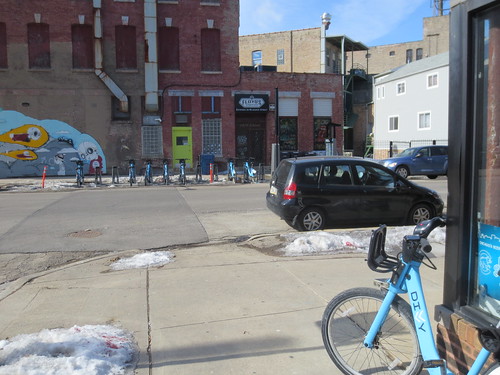
Aldermen have the last word about where Divvy stations are placed in their wards, and Wiedel said aldermanic support is critical to the effective expansion and continuing operation of the system. Therefore, it’s important that aldermen understand the benefits of bike-share and understand the importance of well-placed Divvy stations.
Constituents can help educate their aldermen on these topics, and now is the time to act. In the next two to four weeks, each alderman will receive a list of proposed Divvy station locations in his or her ward. Residents need to reach out to the aldermen and discuss the proposed locations with them to make sure each neighborhood gets well-placed stations.


